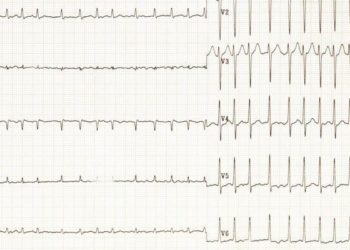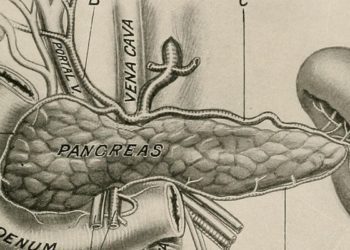2 Minute Medicine Rewind September 29, 2025
1. Replacing clotting factors with fibrinogen concentrate (FC) and prothrombin complex concentrate (PCC) versus frozen plasma (FP) did not lead to a significant difference in units of allogeneic blood products used, 24-hour or 28-day mortality, or safety outcomes including thromboembolic events.
Evidence Rating Level: 1 (Excellent)
Acute trauma coagulopathy is a major cause of mortality, long-term disability, and secondary complications in trauma. Massive hemorrhage protocols differ across continents, countries, and hospitals, and the benefits of using certain hemostatic agents versus others are inconclusive. In this multicenter, parallel-control, superiority randomized controlled trial, 217 patients aged ≥ 16 years requiring massive hemorrhage protocol by the criteria at participating sites within one hour of hospital admission were randomized in a 1:1 ratio to receive either FC and PCC or FP. Both groups received 4 units of red blood cells (RBCs) in both packs and 4 units of platelets in the second pack. The treatment period spanned 24 hours or after the second pack, whichever came first. There was no significant difference observed in the primary outcome: the mean 24-hour allogeneic blood product (RBC, FP, platelet) transfusions was 20.8 (95% CI, 16.7-25.9) units in the FC-PCC group and 23.8 (95% CI, 19.2-29.4) units in the FP group. There was no statistical difference between the FC-PCC and FP groups in thromboembolic events (risk difference, 7.13; 95% CI, −5.89 to 20.65; P = .37), 24-hour mortality (5 [7.6%] vs 12 [16.9%]; P = .24), or 28-day mortality (0.64 [95% CI, 0.30-1.37, P = .25]). This study showed FC and PCC were not superior to FP for initial resuscitation of patients with trauma and were not associated with a higher risk of thromboembolic events. In the absence of superiority, this study suggests favouring factor concentrates in trauma resuscitation, given its advantages over FP, namely that they are easier and faster to administer, have a longer shelf life, do not need blood grouping, and can be used in remote regions.
Efficacy and Safety of Ammoxetine in Major Depressive Disorder
1. Ammoxetine, a novel SNRI developed from duloxetine, was effective at treating adults with major depressive disorder (MDD) and was safe and well-tolerated.
Evidence Rating Level: 1 (Excellent)
The World Health Organization estimates that (MDD) will become the primary cause of disability worldwide by 2030. While selective serotonin re-uptake inhibitors (SSRIs) and selective serotonin and norepinephrine re-uptake inhibitors (SNRIs) are often recommended as first-line therapy given their relatively safe biochemical profile, unfortunately only 30-40% of patients reach remission with these medications. SNRIs may be more efficacious than SSRIs although there is a limited variety of SNRIs. Thus, there is a need for new medications within this class. This phase 2, multicenter, placebo-controlled, parallel-group study investigated the efficacy and safety of ammoxetine, a novel SNRI developed from duloxetine which has demonstrated promising efficacy and safety profiles in phase 1 trials. 239 adults with MDD were randomized in a 1:1:1 ratio to receive ammoxetine 60 mg/day, ammoxetine 40 mg/day, or placebo. Compared to placebo, both ammoxetine 60 mg/day and 40 mg/day significantly decreased Montgomery-Åsberg Depression Rating Scale (MADRS) scores (97.3% CI, −6.2 to 0.0; P = .02 and 97.3% CI, −6.3 to −0.3; P = .02, respectively) after 8 weeks of treatment. However, there was no significant difference in remission rates of MADRS or scores as assessed by the Hamilton Rating Scale for Depression or Clinical Global Impressions-Severity scale. The side effects of constipation, parageusia, weight loss, hyperhidrosis, decreased appetite, dry mouth, diarrhea, dizziness, and nausea were present in at least twice as many patients in the intervention groups as in the placebo group. Notably, no patients discontinued treatment due to sexual dysfunction. Overall, this study found that ammoxetine is effective at treating MDD safe, and generally well tolerated, although further trials with larger samples are required.
Left Atrial Appendage Closure in Patients Refusing Oral Anticoagulation: The LAAC‐REFUSAL Study
1. Left atrial appendage closure (LAAC) was well tolerated and may be considered as an alternative to oral anticoagulation (OAC) for stroke prevention in patients with atrial fibrillation refusing oral anticoagulation.
Evidence Rating Level: 2 (Good)
While OAC remains the first-line prevention therapy of ischemic stroke in patients with atrial fibrillation, patients sometimes refuse it despite medical advice due to concerns of bleeding risk or opposition to chronic use of medications. Left atrial appendage closure (LAAC) is a minimally invasive procedure that excludes the left atrial appendage from systemic circulation to reduce the risk of thromboembolism. LAAC is recommended for patients with contraindications to long-term anticoagulation and has been shown to be non-inferior to vitamin-K antagonists in preventing stroke. This retrospective, multicenter, observational cohort study therefore sought to compare the safety and efficacy of LAAC with OAC in patients with atrial fibrillation. 2649 patients with atrial fibrillation who underwent LAAC were initially screened to identify 119 patients who received the intervention due to OAC refusal and compared with a control group of 238 patients. The rate of procedural complications did not differ significantly between the two groups (1.7% versus 4.6%; adjusted risk ratio: 0.56; 95% CI, 0.13–2.43; P=0.440). At 3 years, the composite of cardiovascular death, stroke, or systemic embolism was significantly lower in the refusal group (adjHR, 0.37 [95% CI, 0.14–0.99]; P=0.048). This may be explained by the finding that refusal patients were significantly younger (68.1±10.1 versus 75.0±8.6; P <0.001) and had significantly fewer comorbidities, including hypertension, diabetes, and chronic kidney dysfunction. These results suggest LAAC might be considered as an alternative to oral anticoagulation for stroke prevention in patients who are rigidly drug adverse. However, larger, randomized trials are required to provide a definitive answer about noninferiority.
1. There was no significant difference in peri-intubation hypotension (PIH) and 28-day mortality between etomidate and ketamine as a single induction agent in elderly patients.
Evidence Rating Level: 2 (Good)
Peri-intubation hypotension (PIH) is a common complication of tracheal intubation with greater risk in elderly patients given the reductive effects of age-related physiological changes and comorbidities on their cardiovascular reserve. Etomidate and ketamine are preferred agents due to their relatively minimal hemodynamic disturbance although data on their use in elderly agents is limited. This study therefore sought to compare the effects of etomidate and ketamine on PIH and 28-day mortality in elderly patients. This prospective, observational cohort study included418 emergency department patients aged 65 years and older requiring tracheal intubation who received either etomidate or ketamine as a single induction agent. PIH was defined as a decrease in systolic blood pressure (SBP) by more than 20% from baseline without treatment, SBP less than 100 mmHg without treatment, or the initiation of vasopressors. The study found no difference in PIH incidence within 30 minutes of medication administration across the two groups (risk difference 9.1 %, 95 % confidence interval [CI] −4.1 to 22.1, p = 0.179) or in 28-day mortality (hazard ratio [HR] 0.66, 95 % CI 0.41–1.07, p = 0.095). However, ketamine was associated with a lower risk of 28-day mortality (adjusted HR 0.59, 95 % CI 0.36–0.97, p = 0.034) in patients who developed PIH and required vasopressors. Furthermore, in patients with a shock index ≥ 0.9, dosage was positively correlated with the probability of PIH in both groups. This study contributes to the existing literature of induction agent selection in tracheal intubation and may support the use of etomidate in certain sub-populations.
Dupilumab and lymphoma risk among patients with asthma: a population-based cohort study
1. When compared with inhaled corticosteroids (ICS) plus long-acting β-agonists (LABA), dupilumab treatment was associated with an increased risk of lymphoma in asthma patients but also led to lower all-cause mortality.
Evidence Rating Level: 2 (Good)
Dupilumab, an interleukin (IL)-4α receptor monoclonal antibody, was initially approved as a treatment for atopic dermatitis and later used to treat asthma, where it has been shown to improve lung function, reduce reliance on oral corticosteroids, and decrease severe exacerbations. However, recent studies have shown an increased risk of lymphoma, particularly cutaneous T-cell lymphoma (CTCL), in patients with atopic dermatitis receiving dupilumab. Therefore, this population-based cohort study compared lymphoma incidence in 14,936 patients receiving dupilumab for asthma with 734,126 patients receiving ICS plus LABA for asthma. After propensity score matching, 14,900 patients in each group were compared for analysis. Dupilumab-treated patients were found to have a significantly increased risk of lymphoma compared to ICS/LABA-treated patients (HR 1.79, 95% CI 1.19–2.71). There were no significant differences in the rate of leukemias or malignant solid tumours. However, dupilumab-treated patients had significantly decreased all-cause mortality (HR 0.65, 95% CI 0.57–0.74). Therefore, despite the increased risk of lymphoma, patients treated with dupilumab still displayed lower all-cause mortality. This may be because asthma is inherently associated with elevated mortality risk. Future studies are required to understand the pathophysiology between dupilumab-associated lymphoma and elucidate dupilumab’s long-term safety profile.
Image: PD
©2025 2 Minute Medicine, Inc. All rights reserved. No works may be reproduced without expressed written consent from 2 Minute Medicine, Inc. Inquire about licensing here. No article should be construed as medical advice and is not intended as such by the authors or by 2 Minute Medicine, Inc.








